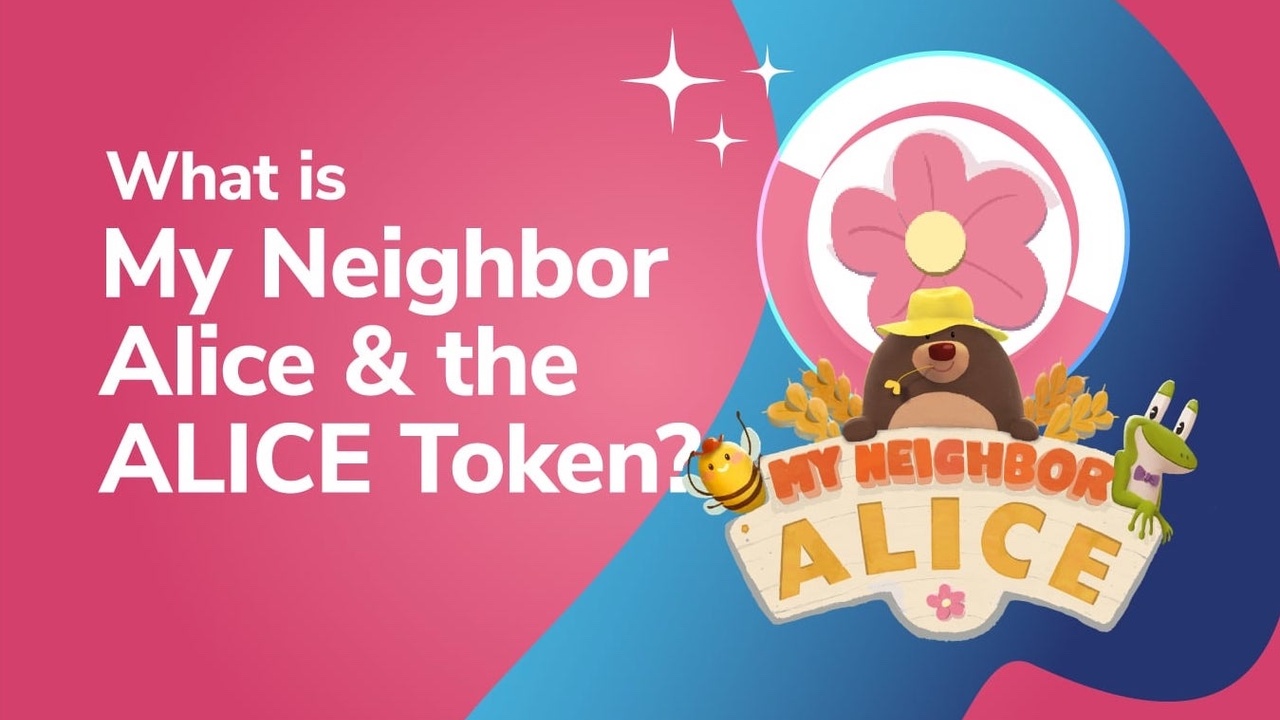
My Neighbor Alice has recently seen a fresh surge of interest, along with an increased presence on various social media platforms. Also, the ALICE token has been trending on CoinGecko and promoted across several Binance marketing campaigns. Decentralized gaming has become more prevalent following the rise in popularity of non-fungible tokens (NFTs). But, why has My Neighbor Alice gone viral in the crypto community, and, what is My Neighbor Alice doing to attract and maintain so many users?
In this article, we’re going to explore My Neighbor Alice and discover what the ‘Alice’ World has to offer. Moreover, we’ll look at the functions and use cases of the ALICE token, and how My Neighbor Alice is introducing innovative ways to make a passive income with crypto.
To discover how My Neighbor Alice works on an atomic level, see our Blockchain & Bitcoin 101 course at Ivan on Tech Academy. Here you’ll learn about how blockchain technology operates, functions, forks, cryptography, and why SegWit (Segregated Witness) was crucial to the development of Bitcoin. Moreover, to understand the foundational infrastructure of decentralized finance, see our Ethereum 101 course. Ivan on Tech Academy provides a wealth of educational material, all in one convenient place.
What is My Neighbor Alice?
The game My Neighbor Alice has taken inspiration from popular multiplayer building games such as Animal Crossing and FarmVille. However, My Neighbor Alice has a blockchain twist, allowing users to become owners of unique digital assets.

This has massive potential for gamers to earn a passive income from their virtual land creations. Moreover, the game encourages community interaction and for people to meet new friends.
Additionally, My Neighbor Alice is decentralized with a tokenized governance system. The game is designed to be governed by its users. ALICE token holders can propose updates and vote on any changes to the protocol.
The My Neighbor Alice game is available through the My Neighbor Alice website and will also be available on Steam from July 2021. This means there is no wallet or blockchain experience required to play the game.
Non-Fungible Tokens (NFTs)
My Neighbor Alice has been made possible thanks to blockchain technology and the creation of non-fungible tokens (NFTs). Unlike cryptocurrencies or fiat cash, NFTs are not suited for use as a medium of exchange. Also, they are not divisible into smaller units. NFTs represent unique pieces of data that cannot be replicated or manipulated and are transparently recorded on the blockchain.
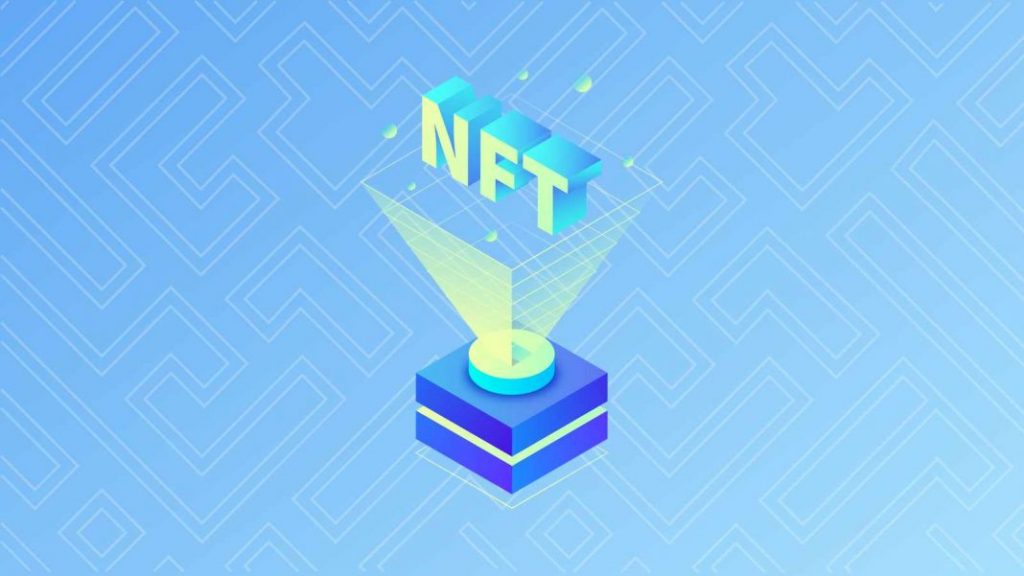
Non-fungible tokens (NFTs) can be created on many different blockchains. Plus, NFTs can be programmed for holders to gain certain rights, access, or physical goods when holding the token. The developments in blockchain technology over the past decade have led to the ability for just about any real-world or physical item to be tokenized on the blockchain. This is in addition to the ability for users to design and mint their own digital creations.
Non-fungible tokens (NFTs) have largely been used to tokenize artwork. More recently, we’re beginning to see the introduction of NFTs in the music, sports, and medical industries too. However, by far the largest use case for NFTs is in blockchain-based gaming. The introduction of NFTs to the gaming world means the hours users spend playing games can now become profitable, through ownership of the digital assets within a game. Also, NFT standards make it easy to use the same NFT across multiple games (e.g. a rare sword or suit of armor).
Binance Launchpool & Binance Smart Chain (BSC)
My Neighbor Alice was first mentioned in the Binance Research reports, published on March 11th, 2021. The report describes an overview of the game, tokenomic structures, and the ALICE token release schedule. Moreover, on this date, My Neighbor Alice became the 18th project to launch through Binance Launchpool.

Binance users can stake their BNB, BUSD, or CHR tokens in the Binance Launchpool to be rewarded with ALICE tokens. ALICE token staking rewards are available from March 10th, 2021 for 30 days. Chromia (CHR) tokens are a crucial piece of the My Neighbor Alice infrastructure. This is because Chromia can facilitate the use of My Neighbor Alice non-fungible tokens (NFTs) across both the Ethereum blockchain and Binance Smart Chain (BSC).
Chromia Blockchain
The Chromia blockchain provides the game’s backend functionality. My Neighbor Alice pays network nodes in the native CHR tokens to enable players to participate without the need for them to own crypto at all.
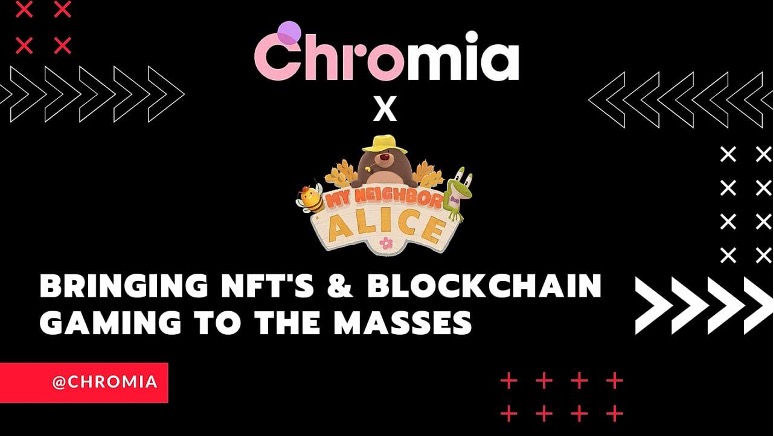
Furthermore, in-game assets are represented by non-fungible tokens (NFTs) that use an innovative hybrid model. These NFTs exist on both Ethereum and Binance Smart Chain (BSC), where they can be freely traded. Meanwhile, a ‘paired’ Chromia Original NFT lives on the Chromia blockchain where it stores additional metadata. This unique model opens the door for a wide range of exciting new use cases for NFTs!
Moreover, Chromia’s “Relational Blockchain architecture” will enable the game to operate without a centralized server. This means that all in-game data and player progress is stored on a Chromia sidechain in a tamper-proof, transparent way.
Decentralized Gaming
Decentralized and blockchain-based gaming is taking the user gaming experience to a whole new level. Thanks to non-fungible tokens (NFTs), digital assets earned and designed in a game are transparently owned by the user, not the game publishing company. Additionally, NFT assets can be freely traded on a decentralized open market, with some NFTs providing interoperability between different games.
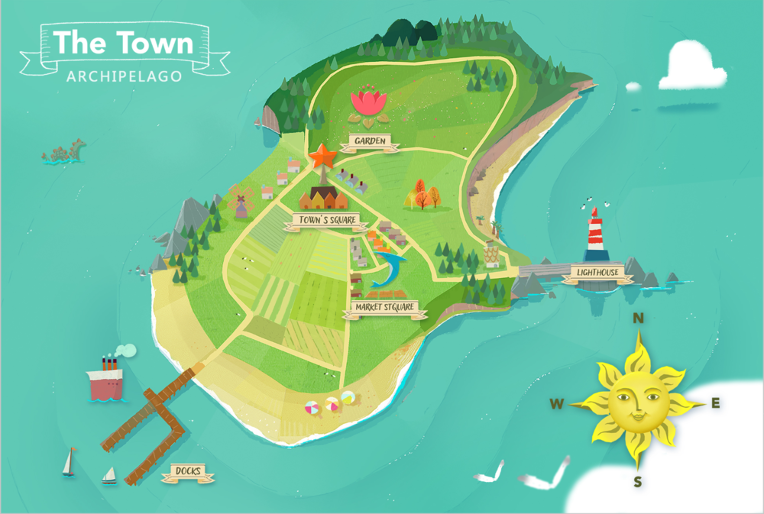
The key difference between traditional online gaming and decentralized gaming is that the games are player-owned. Decentralized gaming often has governance tokens (such as the My Neighbor Alice ‘ALICE’ token) to allow holders to vote on updates and changes to the game. This means the gaming platform is designed with players in mind, with profits reinvested into token holders as opposed to the pockets of CEOs of large gaming corporations.
You can learn how to build your own decentralized blockchain-based games through Ivan on Tech Academy. We offer a variety of expert-guided courses, using a range of different programming languages and environments for development. If you’d like to create your own game try our Ethereum Game Programming course. Alternatively, if you’d prefer to build decentralized gaming applications on other blockchains, see the Unity Blockchain Game Development 101 and Enjin Blockchain Game Development 101 courses, only at Ivan on Tech Academy. Join over 30,000 students at the number one online blockchain education suite!
My Neighbor Alice Key Game Features
Before we look at how My Neighbor Alice works under the hood with non-fungible tokens (NFTs), first we’ll discuss the various elements of the My Neighbor Alice ecosystem.
Avatars
When users create an account they choose an avatar to represent themselves. Avatars can interact with each other in the game and can be modified over time by installing new NFT assets.
In-Game Assets
The variety of in-game assets stretches as far as the imagination can take you. Non-fungible tokens (NFTs) represented as digital assets range from cosmetics and accessories for avatars, to combine harvesters, houses, horses, and vegetables. Anyone can create an in-game asset that can be deployed into the game. Alternatively, users can purchase in-game NFTs through the marketplace.
Virtual Land
Virtual plots of land in the game are available through ‘Alice’ or the marketplace. Each piece of land is represented as a non-fungible token (NFT) on the blockchain, with a transparent limited supply. Also, users can rent out their land to other users, with the potential to make a passive income with decentralized gaming finance.
Islands
Islands are the non-fungible token (NFT) lands that have been moderated or decorated with additional in-game assets. Users can choose and adjust the terrain of islands, and build their own infrastructures and decorations on them.

NFT Marketplace
Another great thing about My Neighbor Alice is the interoperability with other NFT marketplaces. My Neighbor Alice has its own in-game marketplace for in-game NFT assets such as the ones already mentioned. Additionally, in-game assets can be sold among other decentralized marketplaces on other blockchains too. This is to increase liquidity for the assets, alongside promoting and encouraging others to participate in the game.
ALICE Token
My Neighbor Alice is a game that’s free for anyone to play. However, depending on how much involvement you’d like in the game, the chances are that you’ll likely need to purchase some ALICE tokens to buy in-game assets. Also, the ALICE token is currently the only cryptocurrency used in the My Neighbor Alice marketplace.

Additionally, players can stake their ALICE tokens in the game to earn rewards alongside governance rights. This means players can then propose or vote on updates to the protocol.
Staking rewards also include exclusive game content and digital asset rewards. Depending upon the amount of ALICE staked and the set period, players can unlock special features such as the ability to open up a store or be offered limited selected quests. Also, the play-to-earn model means that players can earn ALICE tokens through participating in competitions, completing tasks, and in-game quests.
The ALICE token is represented as both ERC-20 and BEP-20 token standards, allowing immense flexibility and interoperability between some of the largest blockchains. The ALICE token reached an all-time high of $40.93 shortly after release on March 15th, 2021 according to CoinGecko. At the time of writing, the ALICE token price is around $17 with a market cap of $1.7 billion.
How Does My Neighbor Alice Work?
Users can create their own land and purchase assets creating an experience for other users to enjoy. Also, users can make a passive income with crypto by charging entrance fees. Furthermore, My Neighbor Alice creates a decentralized social community of players, or neighbors, who can send ALICE tokens and non-fungible tokens (NFTs) to each other through the game chat and exchange in-game assets.

My Neighbor Alice NFTs
The use cases for non-fungible tokens (NFTs) in My Neighbor Alice are broad and varied. The platform categorizes their use of NFTs into the following:
- NFT Minting
Users can mint their own in-game NFTs by staking their ALICE tokens or providing liquidity for ALICE pools on decentralized exchanges (DEXs).
- Collateral Filled NFTs
A percentage of each NFT’s value is collateralized. Furthermore, when liquidity is required, NFTs can be burned to free-up the underlying asset, which provides NFT holders with additional security.
- NFT Rentals
Users can now rent out their in-game assets to other users. This can be cryptographically secured for a set period thanks to the use of smart contracts. There are many reasons why renting non-fungible tokens (NFTs) is an attractive opportunity. For users needing specific expensive in-game items to complete tasks within the game (e.g. requiring a tractor for harvest, or a stronger fishing rod when deep-sea fishing), it can be more profitable to rent these NFTs for one-time use. Alternatively, expensive in-game NFT assets could be a worthy investment if there is a demand for people to use them. Moreover, renting out NFTs allows users to earn a passive income with crypto.
Why Play My Neighbor Alice?
The play-to-earn model allows users to make a passive income whilst completing My Neighbor Alice quests. Completion of quests may be rewarded with digital NFT assets. Some of these assets can then be freely traded in a decentralized marketplace.
Aside from the ability to earn money whilst playing games, My Neighbor Alice is making the blockchain world fun and approachable for almost any demographic. My Neighbor Alice has created a decentralized, community-run game allowing users to create, use, and trade their own non-fungible tokens (NFTs), without even knowing what an NFT is!
This friendly approach to the introduction of blockchain has so far proven incredibly successful. The platform has seen immense adoption and several partnerships within just a few months. This will likely come as no surprise to many, as My Neighbor Alice is a colorful and engaging platform that is very welcoming to non-technical users.
My Neighbor Alice Summary
My Neighbor Alice is the leading blockchain-based decentralized gaming platform to improve on innovations and protocols from previous multiplayer builder games. Also, the game’s graphics are soft, real-life-like, and reminiscent of previous gaming trends like Animal Crossing.
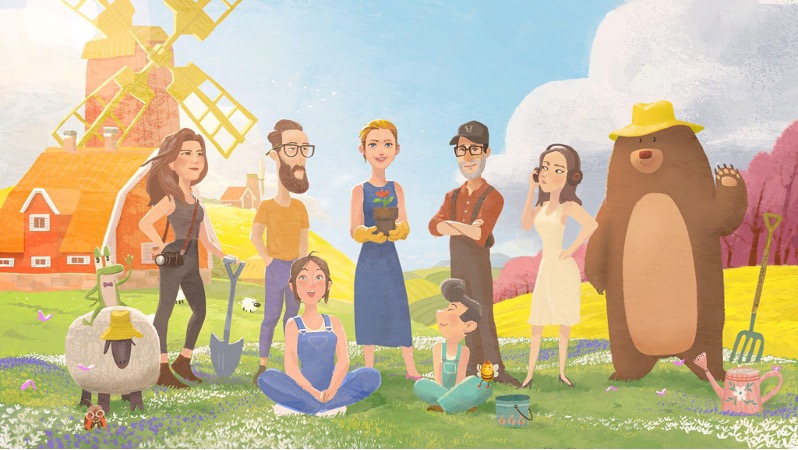
The decentralized gaming industry is just beginning to make noise in the mainstream gaming world. My Neighbor Alice is a community-governed easy-to-use blockchain-based multiplayer game that is designed to draw the masses towards blockchain. Furthermore, the engaging graphical user interface (GUI) and incentivizing tokenomic structure certainly make My Neighbor Alice a project to watch in the 2021 Bitcoin bull run.
If you’d like to program your own game but have zero programming experience, Ivan on Tech Academy is the solution for you! Ivan on Tech Academy can take students with no previously-related experience in coding, to fully-equipped blockchain programmers in just a few short months! For those just getting started, our Javascript Programming for Blockchain course is the one for you. Following this, you’ll have a strong enough foundation to learn the Solidity programming language through our Ethereum Smart Contract Programming 101 course.
In addition to the courses mentioned previously, the skills developed through these basic programming courses can allow you to move on to more advanced programming courses. These include the Ethereum Smart Contract Programming 201 course, Bitcoin Programming 101 course, EOS Programming 101 course, and more! Also, don’t forget to reach out on Twitter @Academy_IOT to let us know your thoughts on My Neighbor Alice!
